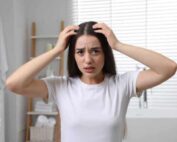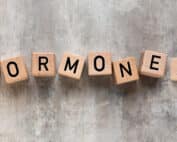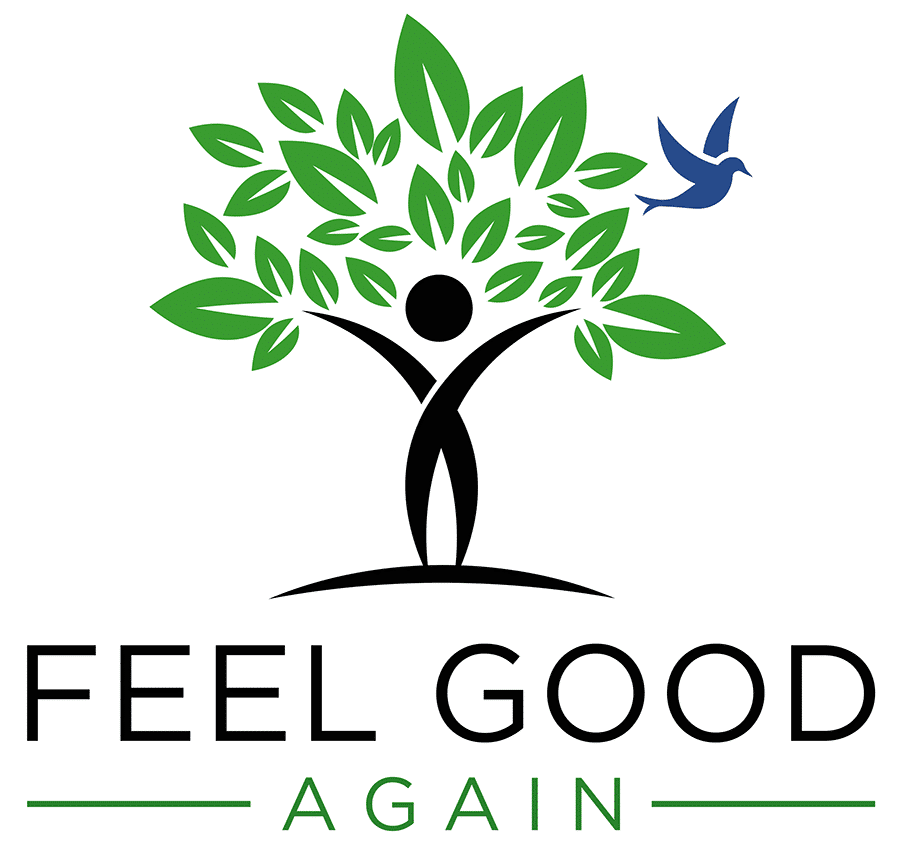Women’s Hormones and Mood Swings
From PMS to Peri menopause to menopause, hormone fluctuations can take women on a wild ride. Women who cycle can be on this ride for a long time. They may have brief interludes during pregnancy and/or in their 20’s and early 30’s. Cycling women complain of many symptoms. PMS occurs when hormones are not in balance especially during puberty when hormones are ramping up. During puberty, your body is trying to establish a rhythm and adjust. Perimenopause is the other side of the coin. Once you start running out of eggs, you have cycles that become irregular. Bleeding may become heavy and many women develop fibroids and fibrocystic breasts. This occurs from insufficient progesterone. In menopause, estrogen and progesterone can be very low and memory, mood and desire reflect this. When it comes to hormones, it’s all about levels and balance.
Progesterone balances estrogen
Every hormone has a counter hormone to balance its effects. Just think of a car with a gas pedal and brake. You need both to keep a steady speed when you are going up and down hills. Think of estrogen as the gas. It gives you energy, makes your breasts and uterine lining grow and sharpens memory among other things. When an egg develops from the surge of estrogen and ovulation occurs, progesterone is made in the follicle to balance the surge of estrogen. Here’s what progesterone does:
- Stabilizes the uterine lining and prevents mid cycle spotting and bleeding.
- Stops overgrowth of breast tissue.
- It has a diuretic effect that relieves fluid retention and bloating.
- Calms the nervous system to relieve anxiety.
- Sedates and promotes sound sleep.
- Prevents hair loss by decreasing the conversion of testosterone to Dihydrotestosterone (DHT), which is a very strong metabolite of testosterone.
Pre Menstrual Syndrome vs Perimenopause
Pre Menstrual Syndrome (PMS) occurs during puberty, teenagers get hormone surges. Hormones are ramping up. Like a new driver, the brain controlling the output doesn’t yet have the finesse to fine tune the speed. Surges of estrogen can make someone snap, then when hormones drop at the end of a cycle, depression and withdrawal set in. As your cycle stabilizes, these symptoms become much less pronounced or disappear. Some women have chronic imbalances and can suffer from symptoms of hormone imbalance.
- Menstrual migraines
- Headaches
- Weight gain,
- Bloating
- Breast tenderness
- Mood swings
- Anxiety
- Irritability
- Depression
Many of these symptoms can also occur after having a baby. While most women have estrogen excess from their diet, environmental estrogens and cycles that don’t produce eggs, some have other imbalances. It is important to measure hormone levels and look at the interrelationship amongst all of your hormones.
Perimenopause is like PMS in reverse.
The eggs in your ovaries start to run out in your mid thirties and your brain pumps out a lot more follicle stimulating hormone, FSH and leutenizing hormone, LH to stimulate your ovaries to produce an egg. If no egg is produced, you have a lot more estrogen and no progesterone. It’s like driving a car with no brakes. You don’t get the calming effects of progesterone and feel out of control. The uterine lining continues to grow and its shedding becomes incomplete or irregular. Women complain of many of the same symptoms of PMS and in addition:
- Fibroids, spotting
- Heavy and/or irregular periods
- Ovarian cysts
- Hair loss, weight gain
- Insomnia
- Anxiety
- Irritability
- Memory lapses
Menopause is when both hormones decline, like driving a car that sputters with too little gas and worn out breaks. You get what Suzanne Somers coined the Seven Dwarfs of Menopause
- Itchy
- Bitchy
- Sweaty
- Bloaty
- Sleepy
- Forgetful
- Psyco
Lifestyle Factors
Many factors stimulate, disrupt and block hormones. Some cause reabsorption of hormones. Here’s what you can do to bring hormones into better balance:
-
- Eliminate hormone disruptors in your diet such as
- Eliminate BPA’s in plastics and the lining of cans- eat fresh or frozen.
- Reduce herbicides and pesticides by thoroughly washing fruits and vegetables and eat the “dirty dozen” organic (apples, bell peppers, celery, cherries, imported grapes, lettuce, nectarines, peaches, pears, potatoes, spinach and strawberry).
- Buy hormone free and antibiotic free meat and dairy or better yet, free range, grass fed organic.
- Increase the elimination of hormones by increasing soluble fiber. Eat oats, beans, berries, apples and high fiber fruits and vegetables. Ground flax meal is also good.
- Eliminate hormone disruptors in your diet such as
-
- Chasteberry, an herb can stimulate the production of progesterone and is helpful during PMS and Peri menopause.
-
- Black Cohosh and Rhapontic Rhubarb (Rheum rhaponticumL.) extract are the most effective for relieving hot flashes and symptoms of menopause.
-
- Gamma Linoleic Acid found in primrose oil and in higher concentrations in borage oil can relieve swelling and bloating along with Vitamin E.
-
- B complex vitamins help you metabolize hormones and are essential for energy production.
-
- Sleep 6-8 hours and take relaxation breaks throughout the day
-
- Eat a low glycemic diet (less white and processed foods such as sugar, white flour, pasta, rice, tropical fruits that are digested quickly and raise blood sugar).
This is the short list of what studies showed had the most benefit. Buy quality ingredients from a trusted source, as many companies do not purify or standardize their products and may not use the dose and form that studies found effective.
Balance with Bioidentical Hormones
When all else fails and you want to have better control of your moods and life, seek medical advice and have your hormones measured. Hormones can be balanced with replacement.
- Progesterone alone is very calming and smooths the roller coaster ride during PMS, post partum and perimenopause.
- Testosterone helps women stabilize their moods, regain self confidence and self esteem and libido. It drops in many women during perimenopause but rises in some, especially those with polycystic ovarian syndrome and insulin resistance.
- Menopausal women often need all 3 hormones – estrogen, progesterone and testosterone.
Many people are concerned about hormone replacement therapy due to the results of the women’s health initiative. In that study the average age of women was 63, they were 10 years past menopause and used high doses of the synthetic hormones Premarin, Provera and Prempro. Bioidentical hormones are the same chemical structure as the hormones in your body. The International Menopause Society and The North American Menopause Society have both changed their recommendations. If you are symptomatic, it is better to start hormone replacement therapy early because there are many benefits.
Harmonize your hormones with lifestyle ad when all else fails, seek the advice of an anti aging, functional medicine expert to help you balance your hormones with bioidentical estrogen, progesterone and testosterone. Seek out someone who will take into account your diet and unique genetic and metabolic makeup for personalized, customized care.





She is a recognized and award-winning holistic, functional, integrative and anti-aging healthcare practitioner, speaker and author, and has been featured in ABC News, Forbes, WOR Radio and many media outlets to spread the word that you can live younger and healthier at any age.